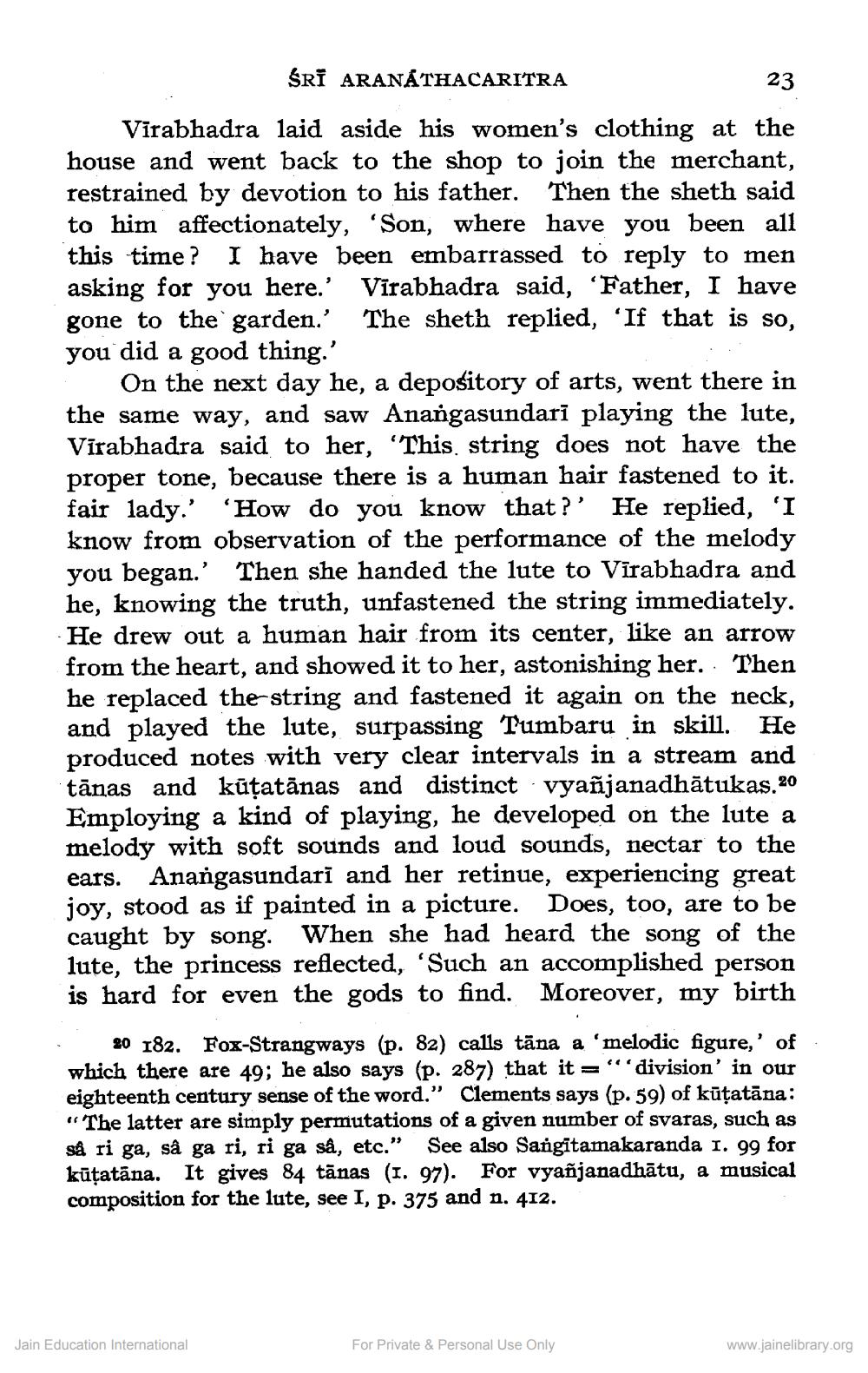________________
SRI ARANÁTHACARITRA
23
Virabhadra laid aside his women's clothing at the house and went back to the shop to join the merchant, restrained by devotion to his father. Then the sheth said to him affectionately, 'Son, where have you been all this time? I have been embarrassed to reply to men asking for you here.' Vīrabhadra said, "Father, I have gone to the garden.' The sheth replied, 'If that is so, you did a good thing.'
On the next day he, a depository of arts, went there in the same way, and saw Anangasundari playing the lute, Virabhadra said to her, 'This, string does not have the proper tone, because there is a human hair fastened to it. fair lady.' 'How do you know that?' He replied, 'I know from observation of the performance of the melody you began.' Then she handed the lute to Vīrabhadra and he, knowing the truth, unfastened the string immediately. He drew out a human hair from its center, like an arrow from the heart, and showed it to her, astonishing her. Then he replaced the string and fastened it again on the neck, and played the lute, surpassing Tumbaru in skill. He produced notes with very clear intervals in a stream and tānas and kūțatānas and distinct vyañjanadhātukas.20 Employing a kind of playing, he developed on the lute a melody with soft sounds and loud sounds, nectar to the ears. Anangasundari and her retinue, experiencing great joy, stood as if painted in a picture. Does, too, are to be caught by song. When she had heard the song of the lute, the princess reflected, 'Such an accomplished person is hard for even the gods to find. Moreover, my birth • 20 182. Fox-Strangways (p. 82) calls täna a 'melodic figure,' of which there are 49; he also says (p. 287) that it ="division' in our eighteenth century sense of the word.” Clements says (p. 59) of kūțatāna: "The latter are simply permutations of a given number of svaras, such as så ri ga, så ga ri, ri ga så, etc." See also Sangītamakaranda 1. 99 for kūțatāna. It gives 84 tānas (I. 97). For vyañjanadhātu, a musical composition for the lute, see I, p. 375 and n. 412.
Jain Education International
For Private & Personal Use Only
www.jainelibrary.org




